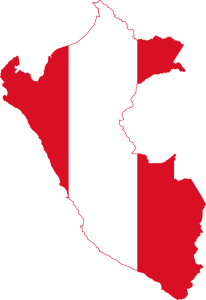Everything You Need To Know For Peru
Geographical Position And Climate Of Peru
Peru is located on the western side of South America, bordered by Ecuador and Colombia to the north, Brazil to the east, Bolivia to the southeast, Chile to the south, and the Pacific Ocean to the west.
The climate in Peru is highly diverse due to its varied topography which includes arid plains, the high Andes mountains, and the Amazon rainforest.
Brief History of Peru
Peru’s history is a tapestry woven with the rich threads of ancient civilizations, most notably the Inca Empire, which rose to prominence in the 15th century and established a sophisticated society across the Andes. The capital of this empire was Cusco, and their monumental achievements include the construction of Machu Picchu.
In 1532, Spanish conquistador Francisco Pizarro arrived, and through a combination of military conquest, alliances, and diseases brought from Europe, the Spanish toppled the Inca Empire. Peru became the center of Spanish colonial power in South America, leading to a fusion of indigenous and Spanish cultures.
After centuries of colonial rule, Peru declared independence in 1821, led by José de San Martín and later Simón Bolívar. The 19th and 20th centuries were marked by political upheaval, territorial disputes, and economic fluctuations.
Today, Peru is celebrated for its archaeological heritage, particularly the Inca ruins, its vibrant indigenous traditions, and its diverse landscapes that continue to attract visitors from around the world.
Religion Of Peru
The most practiced religion in the country is Roman Catholicism.
Language Of Peru
The country’s official language is Spanish. Quechua, which is the language of the Incas is spoken by nearly 10 million people in the country.

Peru is a treasure trove for tourists. It offers an array of attractions from the awe-inspiring ruins of Machu Picchu and the historic city of Cusco to the mysterious Nazca Lines. The country’s diverse landscapes include the Amazon rainforest, Lake Titicaca—the highest navigable lake in the world—and the Colca Canyon, one of the deepest canyons on earth.
Visitors can immerse themselves in Peru’s rich cultural heritage by attending traditional festivals, sampling the acclaimed Peruvian cuisine, and exploring vibrant markets. Adventure seekers have ample opportunities for trekking, mountain biking, and white-water rafting. With its biodiversity and ancient sites, Peru provides an unforgettable experience for history buffs, nature enthusiasts, and culinary explorers alike.
Places You Must Visit In Peru
- Lima
- Cusco
- Machu Picchu
- Sacsayhuamán
- Chan Chan
- Huacachina
- Caral
- Titicaca Lake
- Manu National Park
- Colca Canyon
Before You Visit Peru
Travel to Peru
Travelers can get to Peru primarily by air. With the main international gateway being Jorge Chávez International Airport in Lima, the capital city. There are direct flights from many cities across North America, South America, Europe, and some destinations in Asia.
Overland entry is possible through border crossings with Ecuador, Colombia, Brazil, Bolivia, and Chile, which can be accessed by bus or car. These routes are popular among backpackers and travelers on a South American tour.
Once in Peru, domestic flights connect major cities and tourist destinations, including Cusco, Arequipa, and Iquitos. An extensive bus network offers an affordable way to travel throughout the country, although journeys can be long due to the mountainous terrain. Trains are limited but include notable routes such as the one to Machu Picchu and the Andean Explorer between Cusco and Puno. Rental cars are available but may not be the best option for all travelers due to challenging driving conditions in some areas.
Visas for Peru
Visa requirements for Peru vary depending on the traveler’s nationality. Citizens from most American and Western European countries do not require a visa to enter Peru for tourism purposes for stays of up to 183 days per year.
Travelers from other countries may need to apply for a tourist visa at a Peruvian consulate or embassy prior to their arrival. The types of visas include tourist, business, student, and work visas, among others.
It is important for all travelers to check the latest visa requirements with the nearest Peruvian diplomatic mission or their official government website before planning their trip, as visa policies can change. Visitors should also ensure their passport is valid for at least six months beyond the date of entry into Peru.
Best time to visit Peru
The best time to visit Peru depends on the regions you plan to explore:
- Coastal Region (Lima, Nazca, Paracas): Enjoy warm and sunny weather from December to April. It is ideal for beaches and coastal activities.
- Andean Highlands (Cusco, Machu Picchu, Lake Titicaca): The dry season from May to October is the best time for trekking and sightseeing. With clear skies and fewer rain showers.
- Amazon Rainforest: The drier season from June to September is preferable for jungle tours and wildlife spotting. There are fewer mosquitoes and the rivers are low, making it easier to hike and explore.
Keep in mind that while the dry season offers better conditions for outdoor activities. It also coincides with peak tourist periods, especially in Cusco and Machu Picchu. For those interested in cultural events, timing your visit to coincide with festivals like Inti Raymi in June or the pilgrimage to the Lord of Qoyllur Rit’i can provide a deeper insight into Peru’s rich traditions.
Important Information
Capital – Lima
Territory – 1,285,216 km2
Currency – Peruvian sol (PEN)
Time Zone – UTC-5 (PET)
Population – 34,352,720
Demonym – Peruvian
